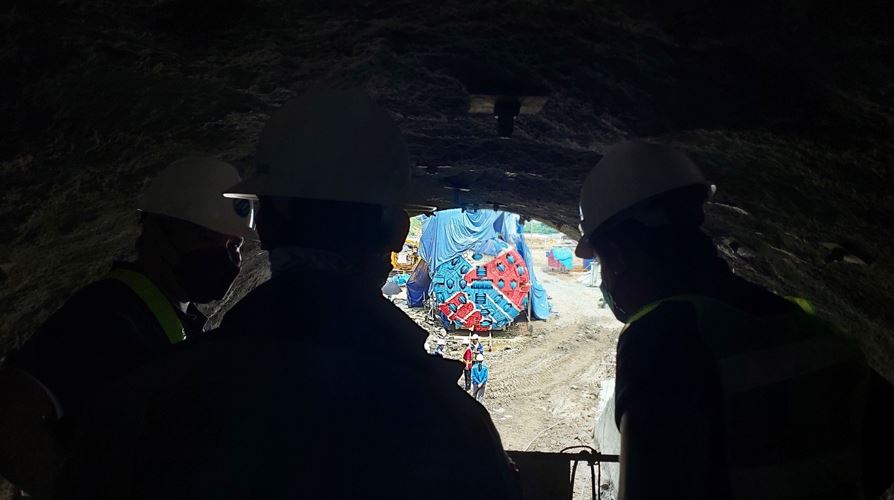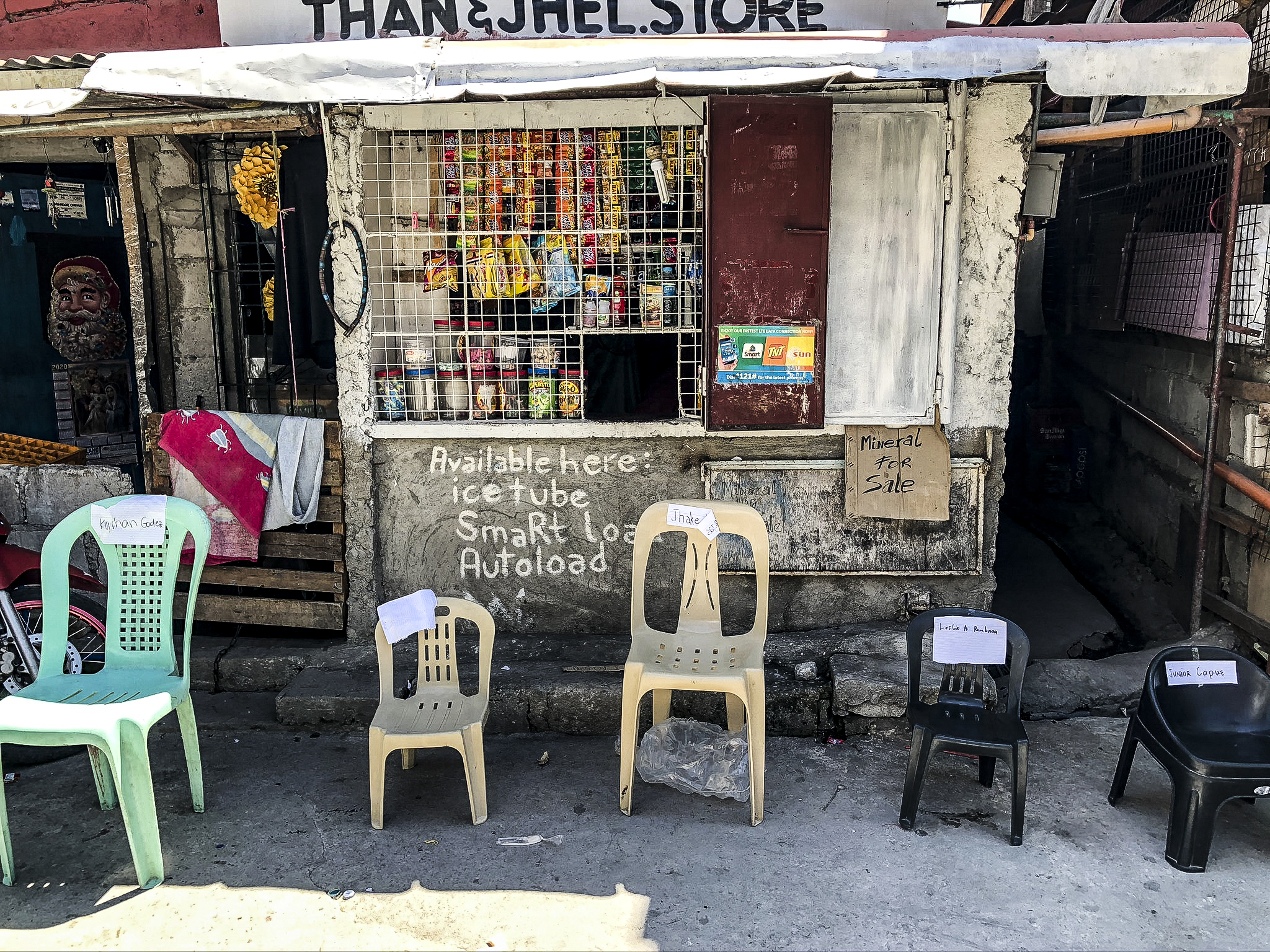Metro Manila’s water is said to be potable if you ask the government waterworks office. However, its consumer-clients, primarily the middle class, and remarkably including the water bureaucrats themselves, have been subsisting on bottled, filtered water. Distrust in the safety of tap water is not a recent development. While infrastructures and technologies are considered emblems of society, what do they otherwise serve if the public trust in their product remains elusive? writes Cla Ruzol
_______________________________________________
When I started my fieldwork, no one I knew drank from the tap. I did not do so until I learned from one engineer of the waterworks office that water being distributed by its two private concessionaires should be and is drinkable. They told me that they did not believe it themselves until they saw the utility staff refill the dispenser from the faucet. It was bewildering to discover that the bureaucrats of the waterworks office, whose very mandate was to provide safe drinking water to Metro Manila residents, also avoided drinking faucet water. The Metropolitan Waterworks and Sewerage System (MWSS) maintains concession agreements with the two private corporations, Manila Water and Maynilad. It services approximately 20 million people in Metro Manila and parts of neighbouring Cavite, Rizal, and Bulacan provinces.
What, then, is the purpose of the redundancy of big infrastructures that convey water from the mountains to the cities when potable tap water continues to be doubted?
Based on my ethnography of an ongoing dam-building project, I observe that the state builds and expands military power under the premise of water infrastructures through its counterinsurgency program. This ethnography is supplemented by archival work on Manila waterworks in late 19th-century warfare. From 2021 to 2023, I followed the bureaucrats of the MWSS- Corporate Office implementing the China-financed New Centennial Water Source – Kaliwa Dam Project to be built within protected areas and the Dumagat-Remontado ancestral domains in the Sierra Madre mountains of the provinces of Quezon and Rizal. It is a 60-m high dam project framed by the Philippine government as the solution to the impending water crisis in Metro Manila. The ethnography constitutes my first-hand observations as a researcher who was given consent to conspicuously accompany my interlocutors in their daily office work, technical meetings, land negotiations, site visits, and consent-seeking workshops, among other activities. Before this, I have been a keen observer of events surrounding this project since 2017 through networks in the university, civil society, media, activism, and local politics at the dam site.

A patho-military control of water
In the Spanish era, the threat of cholera was real and afflicted Manila several times (de Lemps 2001). The waterworks proved insufficient during epidemics when only half of the planned public fountains for potable water and fire hydrants were put in place in the city (Costelo 2020). Adding the number of public water fountains and fire hydrants for drinking water and sanitation proportionate to the population appeared to be an out-of-reach solution. Instead, a rigorous surveillance system was employed. Patrolling water sources was assigned to the Guardia Civil Veterana, while the Guardia Civil performed household inspections to report the cases of illnesses and their water habits (Costelo 2020). The patrols are particularly aimed at monitoring and restricting the movement of natives who relied on public fountains.
By the end of the 19th century, public water supply became a primary matter for military health officers. During the Philippine-U.S. War, Americans occupying the Philippines considered water as constitutive of the disease-ridden tropical environment (Anderson 2006; Doeppers 2016). Water provision conjured up to become colonial warfare where waterworks turned into a disciplinary institution against diseases, particularly cholera and dysentery. The Filipino bodies were construed as “not microscopically clean” and thus carriers of “Philipinitis” and “germania” (Anderson 2006, 58-59). Both germ and insurrecto were contained and disciplined in the reinforcement of medical and military strategies (Anderson 2006).
American invasion through the waterworks
Immediately after the Americans occupied Manila Bay in 1898, Filipino revolutionaries held El Depósito as a stronghold. It was the waterworks that was the primary site of defence in Manila and, consequently, of conquest by the imperialist invaders who viewed the defending Filipinos as insurgents. General Emilio Aguinaldo used the occupation of the waterworks to establish authority to oppose the self-perceived entitlement of the Americans over the country post-revolution. Aguinaldo wrote to the Americans that he had “permitted the use of water” from the city supply from the mountains (Halstead 1899, 317). Aguinaldo’s letter demanded equal rights as General Merritt, the American commander-in-chief. Halstead (1899) and Millet (1899) both documented Meritt’s refusal of Aguinaldo’s request. Millet portrayed Merritt as a temporizing liberator following the orders by Washington “to avoid rupture with the insurgents at almost any cost” (Millet 1899, 185).
Enmity and counterinsurgency
In my ethnography, I often heard my interlocutors distinguish people as kalaban (enemy) with far more certainty than whom they considered kasama (i.e., a patriotic comrade supporting the government). The practice of identifying the kalaban has become almost customary in the consent-seeking process among the Dumagat-Remontado, the indigenous peoples in the Sierra Madre where the dam is to be built. In one instance during the workshop, when they could not identify someone who was verbalizing dissent, one of them exclaimed as they looked at the photos they took, “NPA ata yun ah! Di nagpapakita ng mukha. [They must be an NPA! They don’t show their face.].” NPA here refers to a member of the New People’s Army, the armed group of the Communist Party of the Philippines. This practice of red-tagging is a dangerous pronouncement with a real threat of arbitrary arrest, detainment, an accusation of rebellion, human trafficking, or illegal carrying of firearms. Red-tagging has become commonplace in the Philippines since the legislation of the Anti-Terrorism Act and the creation of the National Task Force to End Local Communist Armed Conflict.
There was a marked change in the composition of the Cabinet during Duterte’s regime. The number of retired military and police officials nearly tripled from 4 in 2016 to 11 in 2019, including those involved in the Kaliwa Dam project, namely, the Department of Environment and Natural Resources, the MWSS and the National Commission on Indigenous Peoples. In a 2019 statement, Duterte said he valued the “discipline, obedience, and efficiency” of the military and the police. What Duterte meant by the “efficiency” of his military officials in the Executive branch of the government was revealed in the Kaliwa Dam project. The Department of Public Works and Highways permitted the construction of an access road traversing the Sierra Madre and the ancestral land of the Dumagat-Remontado without securing a permit or the consent of the indigenous communities. There was a military checkpoint before entering this access road from the national highway. Every authorized person needed to log in by signing their names, time of entry, and signatures, or in the case of residents in the area, showing their ID’s proving their residence inside the now restricted boundary. Aside from this, the heavily armed military stationed by the entrance took a close-up portrait shot of us for their profiling. This was the first time for everyone, and one of my interlocutors mentioned in an aside that they did not like having their photo taken and questioned whether it was necessary.
The state program of tapping water
Counterinsurgency through the water infrastructures has been evident as early as the Spanish colonial times and has recently intensified in the period of Duterte’s authoritarianism (2016-2022). This is contrary to how counterinsurgency is commonly portrayed in literatures as only emanating from the period of the American ‘red scare’ and anti-communism. Counterinsurgency has spanned generations and centuries. Infrastructures encroaching on the mountains and restricting public water use favour counterinsurgency. It is beyond the popular imagination to ensure the security of the sovereign domain from an external threat. Instead, counterinsurgency is integrated into state bureaucracy and infrastructures that had been shaping our urban-rural landscapes.
Bureaucratic procedures were repurposed for policing both the movement of water and the deemed enemies of the state. The use of military power renders democratic processes of consent-seeking, particularly as tolerance of dissent and co-optation. Militarization of water sources affects communities through surveillance, containment of mobility and access, red-tagging, and arrest.
References
Anderson, Warwick. 2006. Colonial pathologies: American tropical medicine, race, and hygiene in the Philippines. Durham: Duke University Press.
Costelo, Ros. 2020. “The Manila Waterworks System: Water Distribution, Access, and Control in the Second Half of the Nineteenth Century.” Illes i Imperis 22: 171-197.
de Lemps, Xavier Huertz. 2001. “Waters in Nineteenth Century Manila.” Philippine Studies (Ateneo de Manila University) 49 (4): 488-517.
Doeppers, Daniel F. 2016. “Fluids of Life: Water and Milk.” In Feeding Manila in Peace and War, 1850-1945, by Daniel F. Doeppers, 253-278. The University of Wisconsin Press.
Halstead, Murat. 1899. Pictorial History of America’s New Possessions. Chicago: H. L. Barber.
Millet, F.D. 1899. The Expedition to the Philippines. New York and London: Haper & Brothers Publishers.
______________________________________________
* This blog is based on a paper which was presented at the Association for Asian Studies 2023 Annual Conference.
*Banner photo by and copyright of the Author.
*The views expressed in the blog are those of the authors alone. They do not reflect the position of the Saw Swee Hock Southeast Asia Centre, nor that of the London School of Economics and Political Science.




